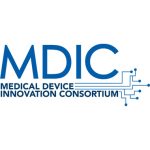In today’s business climate there is a lot to be aware of. So much, in fact that embracing the learning curve can feel like scaling a mountain. There is an unprecedented amount of change happening not only in the markets and in the way marketing is done – but also with emerging technology, materials and new applications. Developing the right strategy and implementing an effective business plan loom in front of the fore-running companies who are attempting to scale these industry heights.
Understanding the trends that are driving these changes – can deliver quality climbing tools to those in key positions. It can also serve to level the playing field for those companies who are truly paying attention.
Medical device manufacturing
Access to recently developed materials, new technological deliveries and access to new markets are only a few of the trends that have affected changes in the medical device market and industry.
China has a 2020 universal health care goal. Mexico, Brazil and other developed countries are rising quickly into the global market, and the need for these technologies is only going to continue to grow.
New trends driven by telemedicine
Telemedicine has already begun reducing the number of emergency room and office visits needed by children and the elderly. The telecommunication advances have made it far easier for those in vulnerable situations to move to address issues at lower cost levels.
Telemedicine technology has catapulted the ability for clinics to track distribution and consumption of medications, the success levels of physical exercise as well as the ability to diagnose.
Navigating the trends
Keep a close eye on the markets, the new electronics technology, the advances in medical device manufacturing technology and advances in how the industry is required to change for new marketing approaches. These are major impacts for any industry, let alone an industry as important to our world’s health and well-being as the medical device industry.
To remain competitive – companies need to be ready to rethink approaches, and re-evaluate current statistics. They need to embrace the available analytics and big data advantages that give critical information about how the markets are affected by the other cultural changes that affect economies on more local levels.
Government-subsidized health care
With the passing of the patient protection and affordable care act in 2010 – new taxation was levied against the revenues of medical device manufacturing companies. Many have a concern that this may have negative effects on the development and success of new and potential companies.
Wooing government dollars by engaging in more localized services and funneling revenue into research and development can also help to offset many the newer medical device manufacturing trends.
Aging in the developed world
It is no secret that the baby-boomer generation is aging. These folks are known to have remained active, working – or with access to retirement incomes.
Yet when a wealthy person ages – the desire to remain healthy is also more vibrant than usual due to a desire to keep the quality of life as high as possible. This means the probability is high that research and development funding may get more attention as well.
Increased competition with shrinking profit margins
Shifting global economies effect shifting global markets. Companies have to pay close attention to what economies in countries like England, Chile, or India are going to do.
When revenues are impacted by sales taxes, shipping costs or market economies – only smart and quick responses from the medical device manufacturing companies will do.
FDA continues to devise new legislation
New legislation and additional regulation are events that are also common to the developing medical device manufacturing process. These realities can have major impacts on how smaller companies move to respond and comply.
The industry responded by citing recall data showing that failures and problems are far more often caused by problems that developed during manufacturing, and were not tied to new device design or development.
Another study conducted by Battelle Memorial Institute showed that out of 47,000 device releases – only 0.16 percent were ever returned or charged with the need for a device recall.
Note: This article originally appeared as a Custom Injection Molding Tools and Tips blog on Cresent Industries, Inc. website.




